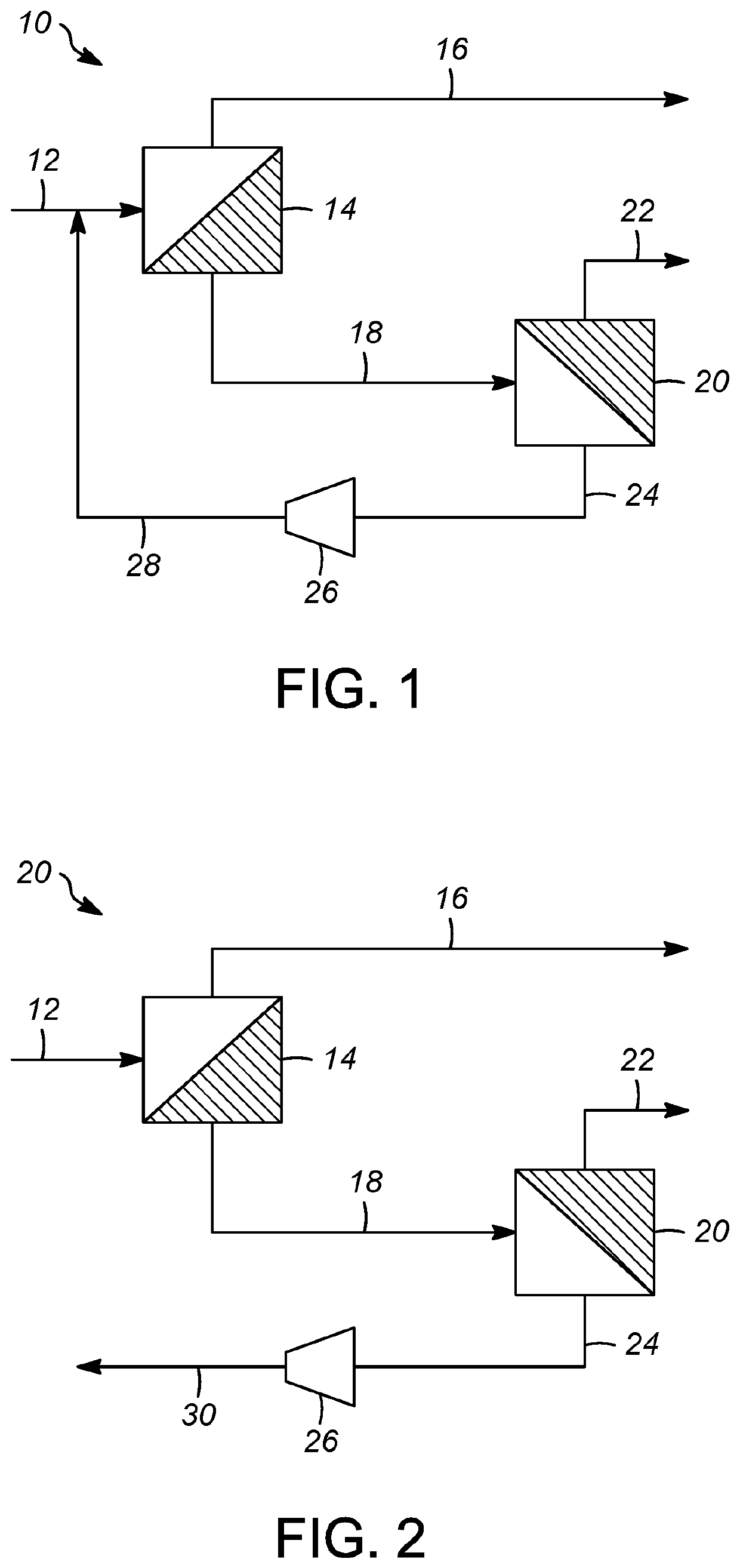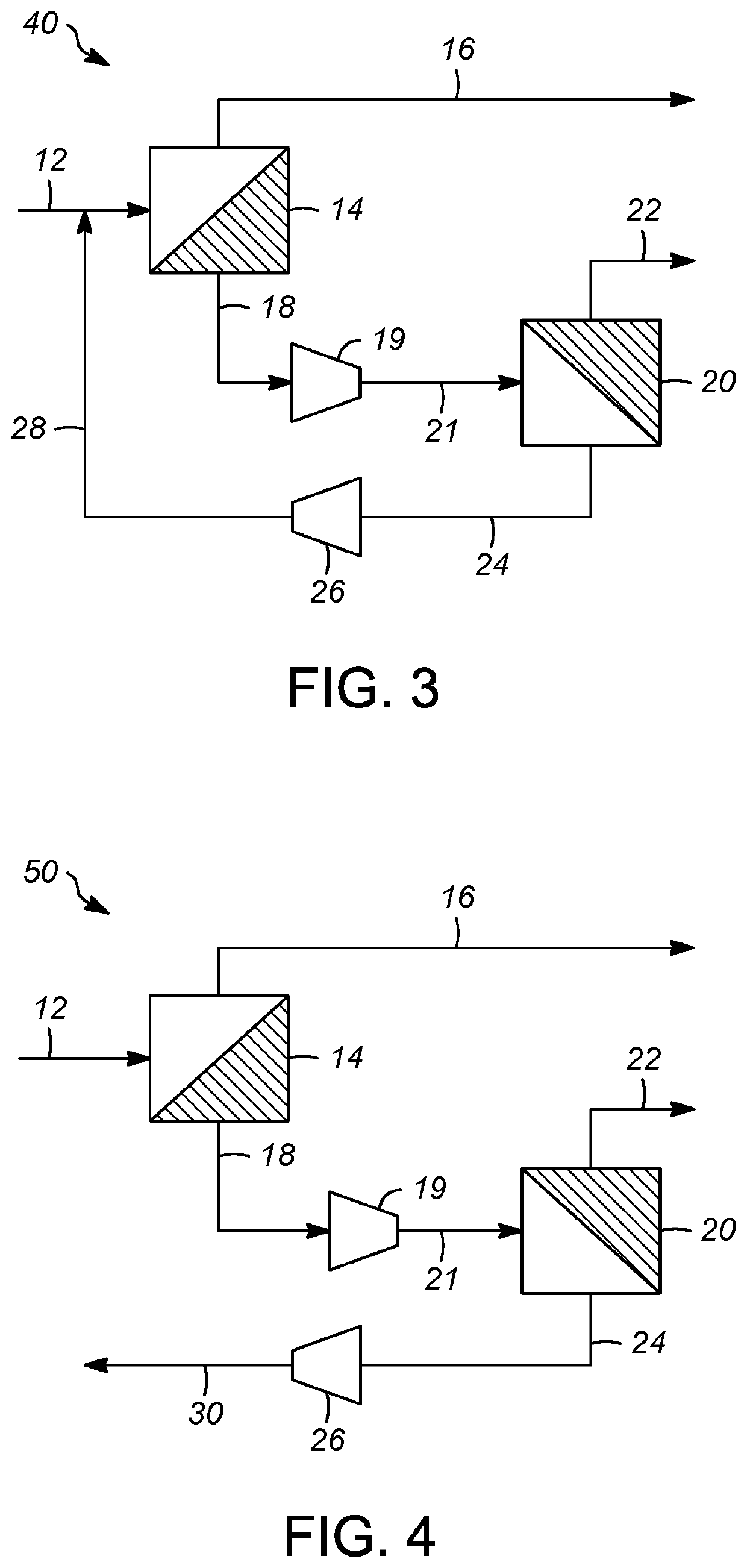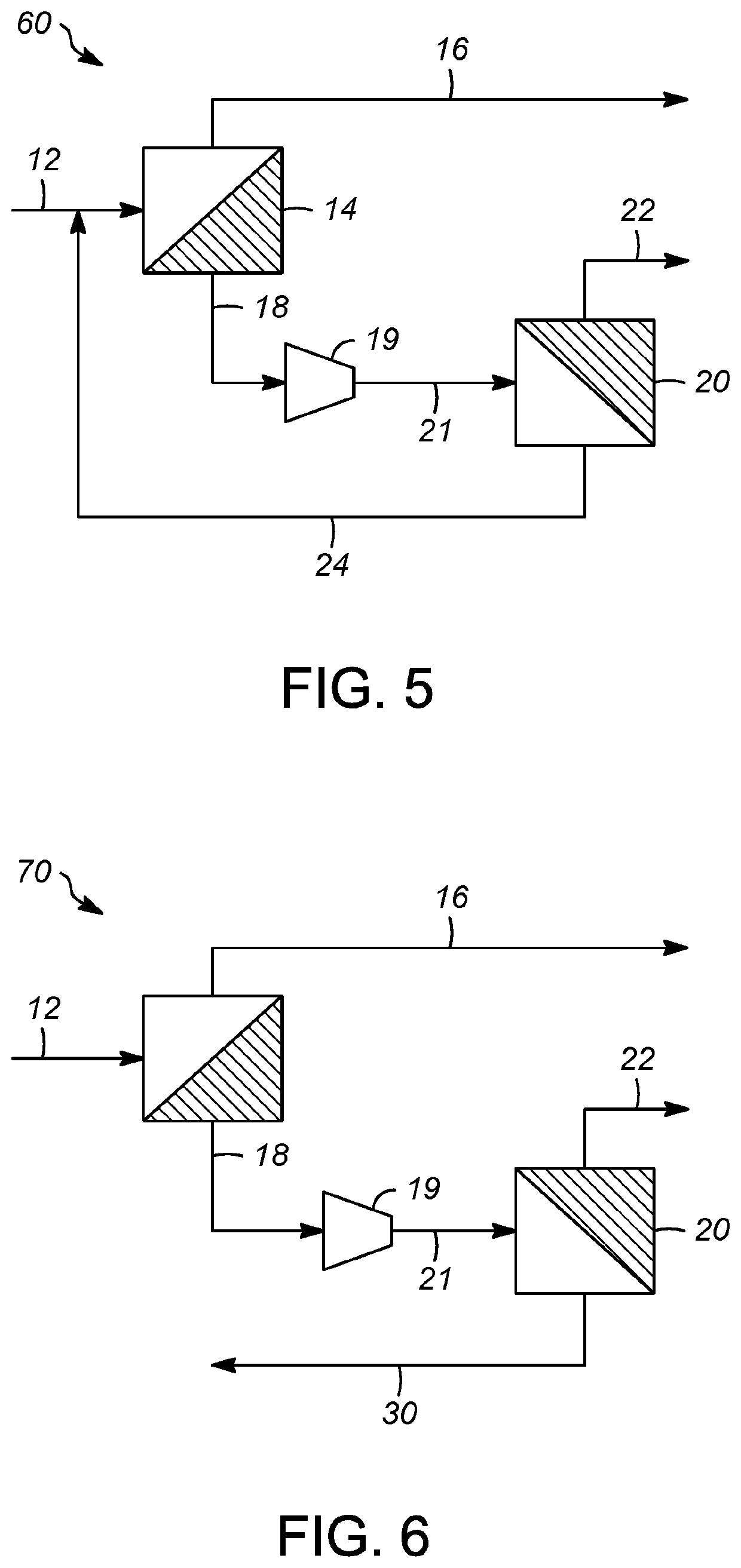Multi-stage membrane systems with polymeric and microporous zeolitic inorganic membranes for gas separations
a technology of inorganic membranes and membrane systems, which is applied in the direction of membranes, dispersed particle separation, separation processes, etc., can solve the problems of lower selectivity in the second stage, shorter membrane life, and lower product recovery, and achieves high permeance, low cost, and high pressure resistance
- Summary
- Abstract
- Description
- Claims
- Application Information
AI Technical Summary
Benefits of technology
Problems solved by technology
Method used
Image
Examples
example 1
A Two-Stage Membrane System Comprising a Polymeric Membrane P-A in First Stage, a Small Pore Microporous Zeolitic Membrane Z-A in Second Stage, and an Inter-Stage Compressor
[0041]As shown in FIG. 5, a two-stage membrane system comprising a low cost (approximately $5 / ft2) polymeric membrane P-A with CO2 permeance of 180 GPU and CO2 / CH4 selectivity of 14 at 60° C. under 985 psig as the first stage membrane and a small pore microporous zeolitic membrane Z-A with high cost (approximately $300 / ft2), CO2 permeance of 470 GPU and CO2 / CH4 selectivity of 42 at 44° C. under 1020 psig as the second stage membrane for CO2 removal from natural gas comprising approximately 30 mol % CO2 / approximately 70 mol % CH4. For this two-stage membrane system, an interstage compressor was used to pressurize the first stage permeate from below 50 psig to 1020 psig and the pressurized first stage permeate was fed to the second stage membrane. The high pressure second stage residue was directly recycled back to...
example 2
A Two-Stage Membrane System Comprising a Polymeric Membrane P-A in First Stage and a Small Pore Microporous Zeolitic Membrane Z-A in Second Stage, a Small Inter-Stage Compressor, and a Second Stage Residue Compressor
[0042]As shown in FIG. 3, a two-stage membrane system comprising a low cost (approximately $5 / ft2) polymeric membrane P-A with CO2 permeance of 180 GPU and CO2 / CH4 selectivity of 14 at 60° C. under 985 psig as the first stage membrane and a small pore microporous zeolitic membrane Z-A with high cost (approximately $300 / ft2), CO2 permeance of 1915 GPU and CO2 / CH4 selectivity of 250 at 44° C. under 100 psig as the second stage membrane for CO2 removal from natural gas comprising approximately 30 mol % CO2 / approximately 70 mol % CH4. For this two-stage membrane system, a small interstage compressor was used to pressurize the first stage permeate from below 50 psig to 100 psig and the pressurized first stage permeate was fed to the second stage membrane. A second stage resid...
example 3
A Two-Stage Membrane System Comprising a Polymeric Membrane P-A in First Stage and a Combination of a Small Pore Microporous Zeolitic Membrane Z-A and a Polymeric Membrane P-A in Second Stage, a Small Inter-Stage Compressor, and a Second Stage Residue Compressor
[0043]As shown in FIG. 3, a two-stage membrane system comprising a low cost (approximately $5 / ft2) polymeric membrane P-A with CO2 permeance of 180 GPU and CO2 / CH4 selectivity of 14 at 60° C. under 985 psig as the first stage membrane and a combination of a small pore microporous zeolitic membrane Z-A with high cost (approximately $500 / ft2), CO2 permeance of 2240 GPU and CO2 / CH4 selectivity of 260 at 44° C. under 100 psig and the polymeric membrane P-A as the second stage membranes for CO2 removal from natural gas comprising approximately 30 mol % CO2 / approximately 70 mol % CH4. For this two-stage membrane system, a small interstage compressor was used to pressurize the first stage permeate from below 50 psig to 100 psig and ...
PUM
| Property | Measurement | Unit |
|---|---|---|
| permeate pressure | aaaaa | aaaaa |
| permeate | aaaaa | aaaaa |
| energy efficiency | aaaaa | aaaaa |
Abstract
Description
Claims
Application Information
 Login to View More
Login to View More - R&D
- Intellectual Property
- Life Sciences
- Materials
- Tech Scout
- Unparalleled Data Quality
- Higher Quality Content
- 60% Fewer Hallucinations
Browse by: Latest US Patents, China's latest patents, Technical Efficacy Thesaurus, Application Domain, Technology Topic, Popular Technical Reports.
© 2025 PatSnap. All rights reserved.Legal|Privacy policy|Modern Slavery Act Transparency Statement|Sitemap|About US| Contact US: help@patsnap.com



